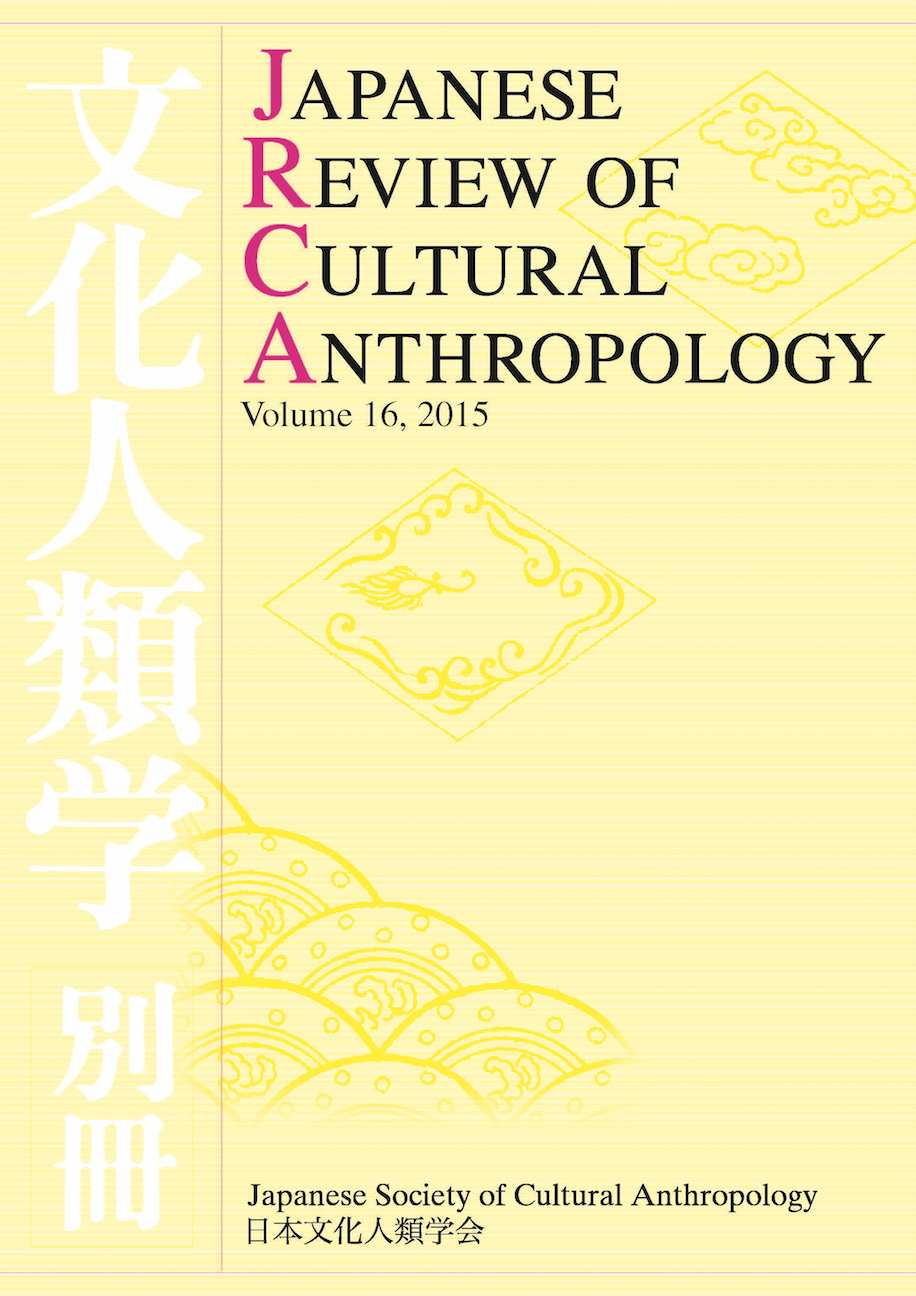18 巻, 1 号
選択された号の論文の16件中1~16を表示しています
- |<
- <
- 1
- >
- >|
front matter
-
2017 年18 巻1 号 p. 000-
発行日: 2017年
公開日: 2018/04/19
PDF形式でダウンロード (483K) -
2017 年18 巻1 号 p. 3-
発行日: 2017年
公開日: 2018/04/19
PDF形式でダウンロード (128K)
2016 Japanese Society of Cultural Anthropology Award Lecture
-
2017 年18 巻1 号 p. 5-36
発行日: 2017年
公開日: 2018/04/19
PDF形式でダウンロード (941K)
Submitted Article
-
2017 年18 巻1 号 p. 37-68
発行日: 2017年
公開日: 2018/04/19
PDF形式でダウンロード (1902K) -
2017 年18 巻1 号 p. 69-89
発行日: 2017年
公開日: 2018/04/19
PDF形式でダウンロード (726K)
Special Issue The Practices of Feeling with the World: Towards an Anthropology of Affect, the Senses and Materiality
-
2017 年18 巻1 号 p. 91-98
発行日: 2017年
公開日: 2018/04/19
PDF形式でダウンロード (284K) -
2017 年18 巻1 号 p. 99-113
発行日: 2017年
公開日: 2018/04/19
PDF形式でダウンロード (408K) -
2017 年18 巻1 号 p. 115-127
発行日: 2017年
公開日: 2018/04/19
PDF形式でダウンロード (450K) -
2017 年18 巻1 号 p. 129-142
発行日: 2017年
公開日: 2018/04/19
PDF形式でダウンロード (391K) -
2017 年18 巻1 号 p. 143-157
発行日: 2017年
公開日: 2018/04/19
PDF形式でダウンロード (457K) -
2017 年18 巻1 号 p. 159-172
発行日: 2017年
公開日: 2018/04/19
PDF形式でダウンロード (564K) -
2017 年18 巻1 号 p. 173-189
発行日: 2017年
公開日: 2018/04/19
PDF形式でダウンロード (772K)
Anthropology and Folklore in Japan II
-
2017 年18 巻1 号 p. 191-220
発行日: 2017年
公開日: 2018/04/19
PDF形式でダウンロード (1079K)
back matter
-
2017 年18 巻1 号 p. 221-222
発行日: 2017年
公開日: 2018/04/19
PDF形式でダウンロード (136K) -
2017 年18 巻1 号 p. 223-224
発行日: 2017年
公開日: 2018/04/19
PDF形式でダウンロード (95K) -
2017 年18 巻1 号 p. e1-
発行日: 2017年
公開日: 2018/04/19
PDF形式でダウンロード (273K)
- |<
- <
- 1
- >
- >|
